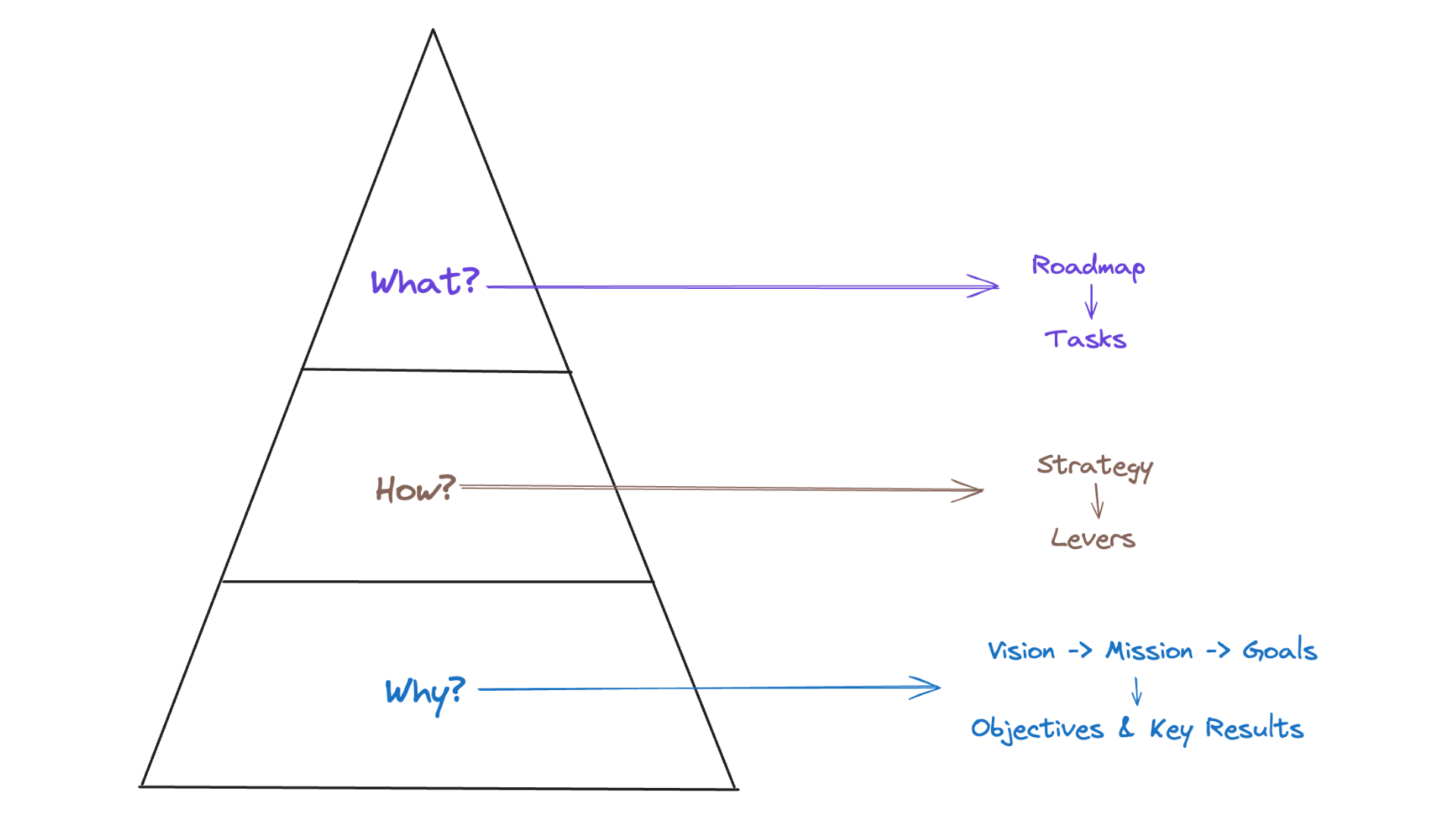How to Structure the OKR Framework for Effective Growth Planning?
In Growth Strategy & Planning Skills, we explored the OKR framework within the context of creating a Growth Roadmap.
In this concept, we will recap the framework's fundamental components as a precursor to organizing an effective growth planning process.

The Fundamentals of Planning:
The planning process is categorized into three layers:
→ Why (Vision -> Mission -> Goal): This layer sets the foundation by defining the long-term aspirations and the core purpose of the company, leading to specific objectives.
→ How (Strategy): This covers the methodology or approach to achieve the set goals.
→ What (Roadmap -> Task): This includes detailed tasks and milestones that outline the execution of the strategy.
Why - Vision, Mission, and Goals:
This segment clarifies the distinction among vision, mission, and goals:
→ Vision: A broad declaration like "Becoming the top software provider in the regional market."
→ Mission: A direct statement about the company’s role, such as "To deliver cutting-edge software solutions that enhance business operations."
→ Goals: Concrete targets like "Achieve 25% market share in the regional software industry by 2025."
How - Understanding Strategy:
It’s crucial to differentiate between a generic notion of 'strategy' and a focused business strategy:
→ Common Notion of Strategy: Often perceived as just any action plan, like increasing marketing spend.
→ Business Strategy: A deliberate plan that makes clear trade-offs and aims for a competitive advantage. For example, "Optimizing product development to reduce costs and undercut competitors on pricing, while maintaining high quality."
What - Goals vs. Roadmap:
Distinguishing between setting goals (OKRs) and developing a roadmap:
→ Goals (OKRs): Objectives and Key Results that outline what the company aims to achieve, such as "Increase annual revenue by 30% within the next three years."
→ Roadmap: Specifies the strategic levers like "Launch three new product lines by 2024 to capture emerging market segments."
Takeaway:
Utilizing the OKR framework effectively for growth planning involves understanding and implementing its foundational layers:
→ defining clear vision, mission, and goals;
→ establishing a robust business strategy; and
→ laying out a detailed and actionable roadmap.
This structured approach aligns all organizational efforts towards achieving strategic objectives.